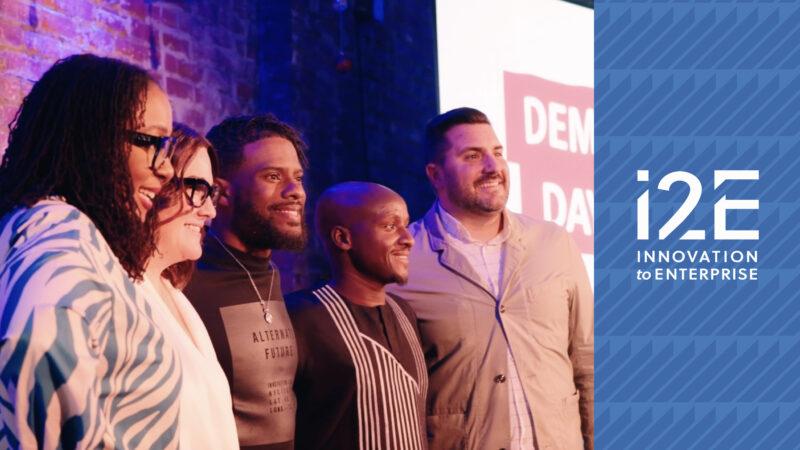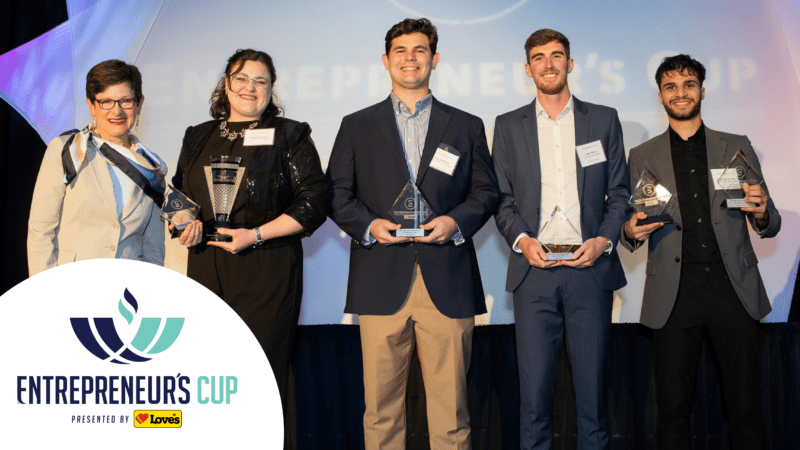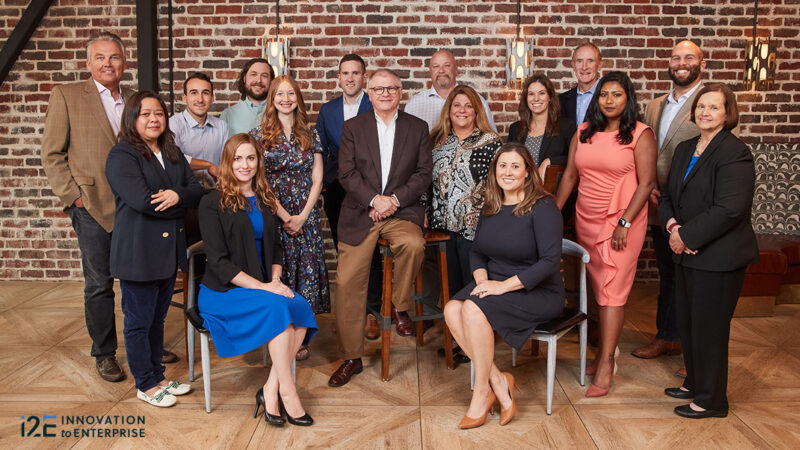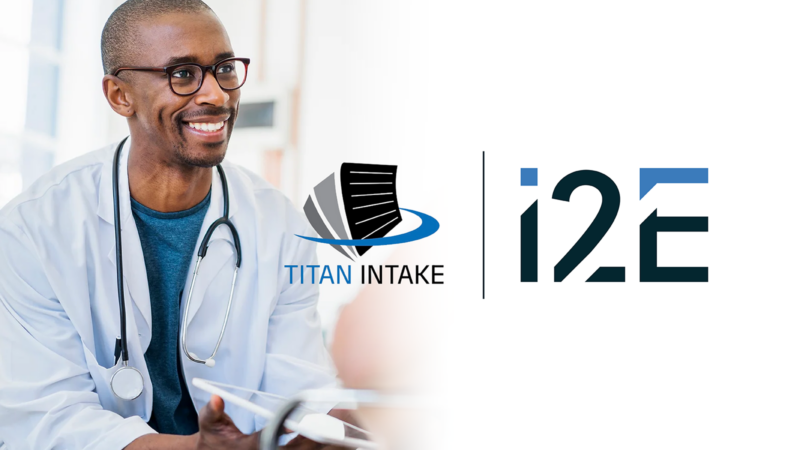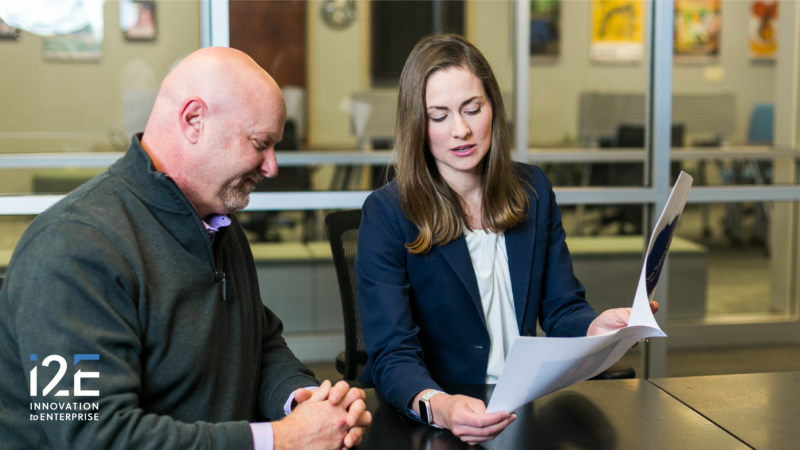i2E and the Diversification of the Oklahoma Economy
By Heidi Brandes
Copyright 2016 – Silicon66 News
The 1980s nearly destroyed Oklahoma.
As oil prices fluctuated like a dying bird, rising and then crashing, Oklahoma’s economy felt the brunt. Banks crumbled and failed like weak empires, businesses closed, bankruptcies flooded the population and unemployment soared.
In the 1970s and 1980s, Oklahoma was mostly an oil and gas and agriculture state. Famous for the miles and miles of oil wells since the 1920s and the infamous Dust Bowl immortalized by “The Grapes of Wrath,” the state relied too heavily on the easy black fortune of oil. Combined with unstable crop prices at the time, the oil bust of the 1980s had a dire, dangerous and lasting effect on the Oklahoma economy.
Oil is traditionally an up and down kind of market. Boom years bring riches; bust years bring despair. What the crippling oil bust of the 1980s made clear was that Oklahoma had to diversify its economy, to protect itself and its populace from the brutal uncertainty of only one or two major industries, especially one as moody as oil.
“A lot of people started thinking that Oklahoma has always been a boom and bust state based on energy prices, so wouldn’t it be nice if we diversified our economy so we didn’t have such a rollercoaster ride,” said Scott Meacham, former treasurer of Oklahoma. “In a rare moment of legislative clarity, the Oklahoma Legislature did a number of things in the early 1990s, and one of the things put in place was that the state should support commercialization activities of high-growth businesses.”
From that, i2E was born from an Oklahoma Center for the Advancement of Science and Technology (OCAST) initiative and has now become a nationally-recognized private not-for-profit corporation that invests in entrepreneurs who are building high-growth companies in Oklahoma.
i2E works directly with entrepreneurs, researchers and companies to help them commercialize their technologies, launch and grow new businesses and access needed capital.
But, much like the industries i2E assists, the corporation has changed dramatically from what it started as. Over 17 years, i2E morphed, grew and changed to become a powerhouse of innovation in Oklahoma that provides business expertise and funding to more than 650 emerging small businesses with more than $49 million of investment capital under management.
BIG IDEAS
Meacham served as Oklahoma State Treasurer from June 2005 to January 2011. In December 2012, he was appointed as President and CEO of i2E.
At its early stage, i2E was a connecting entity that paired would-be entrepreneurs to resources.
“At our genesis, we were sort of an early-stage commercialization company that was a connector,” Meacham said. “Then we started to morph over time. We found we needed to be an educator – we found there was a lack of knowledge about how to be an entrepreneur and people needed a more intensive education.”
Oklahoma also lacked entrepreneurs in industries outside of retail or energy. No one was starting innovation companies, and consequently, Oklahoma did not have deal flow either. Investors and ideas were in short supply.
“There are three key components you need to have,” Meacham said. “First, you need the idea factories, like universities, research institutions and government research labs. The second is people who can take those ideas forward, and the third is capital.”
At the time, Oklahoma’s capital was locked up in real estate and oil and gas, and the state’s best and brightest were exporting to other states. Venture capital was unheard of.
“The state of Oklahoma created the first small little tiny pot of capital. It was called the Technology Business Finance Program (TBFP),” Meacham said. “It was a tiny little pot, and we would invest up to $200,000 in these emerging companies. If they were successful, the state got paid back two times [the amount]; if they failed, the state got zero. It is one of the worst structures you can have.”
Amazingly, Meacham said, the payback rate on the tiny TBFP was 51 percent, and i2E began investing heavily in emerging tech companies and life science biotech startups.
“Part of our genesis behind i2e was that there was a spectacularly successful drug that was launched in Oklahoma that became a $30 billion company in Connecticut,” he said. “So we developed that drug here in Oklahoma, but exported it to Connecticut. What are we doing? We’re investing in these great ideas, but these great ideas were becoming companies somewhere else.”
Meacham couldn’t blame them, though. Oklahoma didn’t have the resources to support wildly successful startups. I2e was doing a good job of bringing innovation, but couldn’t keep the companies in the state.
“It’s hard to make much of an impact with just $100,000 or $200,000 in the TBFP,” he said. “Literally, a new therapeutic may cost $10 to $15 million to get it to market, and even a small startup, maybe an IT startup, would still be several hundred thousand.”
In 2006, the idea of a seed fund was created, another state fund, but in the form of a traditional venture capital fund. Oklahoma would invest essential seed capital to start and scale a company and create equity. i2E became the contract manager of those capital funds.
CHANGING THE STATE
Today, i2E boasts more than $49 million of investment capital under management to serve Oklahoma companies in all phases of the business life cycle, from startups looking for their first round of capital to established businesses seeking funding to expand their markets or products.
For the first time, i2E and Oklahoma could do more high-impact investing, providing up to half of a company’s capital needs. Oklahoma was writing big enough checks to keep significant companies within the arms of the red dirt state.
Among those companies: WeGoLook, a sharing economy platform that dispatches thousands of “lookers” to a location to do a physical inspection of things, such as property that’s for sale or vehicles that need to be inspected for insurance claims.
The Oklahoma City-based startup began in 2009, and thanks to funding for expansion by i2E, WeGoLook now works with numerous Fortune 500 companies and hired its 100th full-time employee in June.
“We needed those funds to expand,” said WeGoLook President and Co-Founder Robin Smith. “Without it, it would have been a much slower process. I had to build a platform that could support 7,000 users for just one of our companies. I needed help getting angel investors, and i2E helped us do that. Without their support, we would have ramped up much more slowly.”
i2E also received a portion of the federal States Small Business Credit Initiative (SSBCI), a U.S. Treasury-funded initiative that provides critical capital and co-investment for Oklahoma entrepreneurs at specific stages of their companies’ life cycles.
Called ‘Accelerate Oklahoma!’, the program is designed to invest, but also accelerate emerging growth, in promising Oklahoma companies. To date, i2E has committed over $11.2 million of the $13.2 million allocated to the Program.
Also offered through i2E is SeedStep Angels, a group of accredited angel investors comprised of successful entrepreneurs and business leaders in Oklahoma. Members provide investment capital, strategic advice and mentoring to emerging growth companies to help them achieve market leadership.
Companies blooming with the assistance of i2E include bio companies like Accele Biopharma and Arthrokinex in Oklahoma City, computer software companies like SOF of Oklahoma City and Avansic of Tulsa, defense and aerospace companies like Amethyst Research Incorporated of Ardmore and more.
“What I saw was a state that after all those years never figured out a way to diversify from oil and gas, and we really needed to invest in diversification,” Meacham said. “I saw i2E as the best diversification tool the state had, where it could push and make a difference.
“Most people would say that the oil bust we’re going through right now isn’t as bad as the 80s, in part because we have other sectors in our economy like aerospace, biotech and things like that. You want to develop these other sectors that will be ballasts whenever the price waves hit the energy sector.
We were a key piece in that. If you look at biosciences and the software IT space of Oklahoma, absolutely i2E was instrumental. We are huge player in those spaces.”

